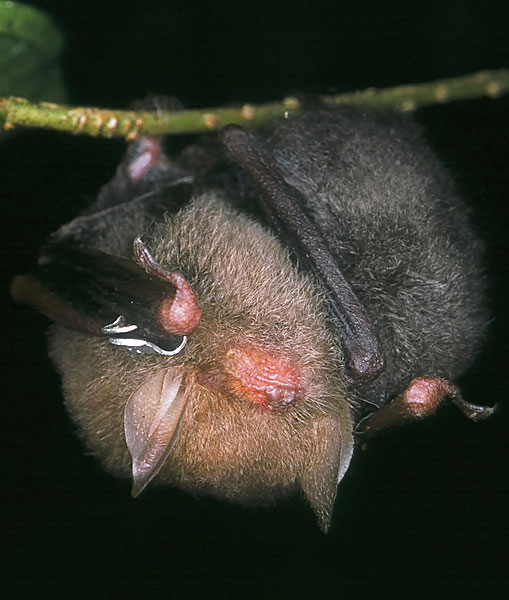Morphological description Life history Distribution Habitat Roost sites and roosting patterns Emergence and flight pattern Foraging behaviour Echolocation calls Status and protection
Photo by Tigga Kingston, from Peninsular Malaysia
Morphological Description
·A very small bat: dorsally the fur is smoky brown, the ventral surface is greyish-ochre.
·The size difference between the first two upper premolars P2 and P3, and the last upper premolar P4 is more conspicuous than in Kerivoula picta (Smith & Xie 2008).
· Forearm length 31-36 mm, ear length 11-15 mm (Smith & Xie 2008).
· This taxon is widely distributed in southern Asia and may comprise several cryptic species (Francis 2008).
Life history
·Little known.
Distribution
Widely distributed in south-east Asia, including Burma, thailand, Laos, Vietnam, Cambodia, Peninsular Malaysia, Sri lanka, india, Sumatra, Java, Sulawesi, the Philippines and smaller Indonesian islands (Francis 2008). In China recorded from Yunnan, Sichuan, Guangxi and Fujian (Wang 2003).
Habitat
· Lives in the forest understorey (Francis 2008).
Roost sites and roosting behaviour
·Roosts have been found in hollow trees and among clusters of dead leaves (Francis 2008).
Emergence and flight pattern
· Slow flying, and very manoeuvrable.
Foraging behaviour
·Little known.
Echolocation calls
· The echolocation calls are likely to be frequency modulated, brief and to cover a wide range of frequencies if they are similar to other Kerivoula species described by Kingston et al. (1999).
Status and protection
·China: RL-VU A2abc + 3abc.
· Globally Least Concern, populations reckoned to be stable (IUCN 2008).
· Forests should be protected as their habitats.
